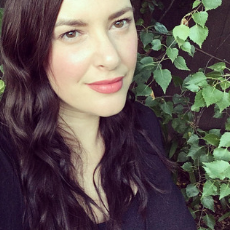|
Guest Blogs |
 We’ve all heard that good characters are the lifeblood of fiction, and when I began work on Gnosis, I didn’t want to scrimp on this vital effort. In keeping with my usual manic personality, I did a bunch of research into character creation. I took my time and consumed a mountain of information on the subject. There are lots of excellent books out there, but to a certain degree, they all required a bit of 'art' to getting the details right. Nothing catered to an organized, systematized approach, and that's what my brain feeds off of. Eventually, I found my way to Myers-Briggs personality types, and quickly drank the Kool-Aid. Although MBTI types have their detractors, mainly because they’re not terribly predictive of real-world human behavior, they turn out to be perfect for creating fictional character models. The idea behind them is that they endeavor to categorize human personalities into 16 basic types, represented by four letter combinations, like INFJ or ESFP. There are two choices of letters for each of the four positions, providing for a total of sixteen possibilities: ENFJ, ENFP, ENTJ, ENTP, ESFJ, ESFP, ESTJ, ESTP, INFJ, INFP, INTJ, INTP, ISFJ, ISFP, ISTJ, and ISTP. These mysterious looking codes, somewhat reminiscent of genetic markers, are quite simple when broken down into their individual components. Taken from first position to fourth, the letters mean: I or E – Introvert or Extrovert N or S – Intuitive or Sensing T or F – Thinking or Feeling P or J – Perceiving or Judging Although the terms above are somewhat misleading, if you do enough reading on the subject, they eventually make sense. If you’re utterly fascinated by this, feel free to read the definitive work by Isabel Briggs Myers, Gifts Differing. Fortunately, as noted earlier, I’m a bit obsessive, so I did a lot more than read this one book. I read dozens. I scoured the Internet, interviewed a number of psychologist friends, and eventually cobbled together my own typing system, so I could adapt Myers-Briggs to my purposes. After about seven months of research, and a few ever-more-complicated software prototypes, I’m finally happy with the current iteration of the JavaScript tool I’ve created. My tool basically allows a writer to quickly put together a character sketch based on a handful of dominant trait choices. You can provide as much or as little information as you want, but with each bit of data you give, the software filters the possibilities for subsequent choices. It forces you to remain consistent within existing Myers-Briggs types. The result is that with a very minor time-investment, you can assemble a character that makes sense. It won’t be a random collection of traits that don’t belong together. It will be behaviorally consistent. So what does ‘behaviorally consistent’ mean? Well, let’s consider a simple example. Let’s say your character is an Introvert. Generally speaking, most Introverts are uncomfortable in large group settings. They tend to be shy at parties, dress in less ostentatious ways, and are often poor at reading social cues. They even have common ways of speaking, food preferences, and hobbies. (These tendencies don’t describe ALL introverts, however. Only some of them. But that’s another discussion entirely.) This being the case, your Introverted character would most definitely not act like Tony Stark (Iron Man) from the Marvel Comics movies. Robert Downey's version of Tony Stark is about as far along the extroverted scale as a character can get. Unfortunately, there are LOTS of different flavors of introverts. They range from the dreamy, offbeat Luna Lovegood (Harry Potter), to ruthless 'fixers' like Doug Stamper (House of Cards). There are opinionated know-it-alls like Cliff Claven (Cheers), and steadfast confidantes, like Dr. James Wilson (House MD). It’s simply insufficient to label a character as an Introvert or an Extrovert, and think you have something interesting. Personalities are far more complex and nuanced than that. My Character Creation Gadget helps you navigate the sea of possibilities, and define the core of your character. The result will be consistent with each of the components that make up a particular Myers-Briggs designation, and the best part is, you don’t have to understand how any of the psychology works. The tool will make sure you color within the lines. Click on the image to the left to go to my Character Creation Gadget. It will open a new browser window and load up the tool. (You may have to turn off your popup blocker to see it.) Give it a few seconds to load up all of the data files. The word “calculating…’ will be displayed in the workspace while it does this. When it says “Ready”, you’re good to go. You might want to check out the “Help” button in the upper left corner first, as this will give you a quick 8 minute YouTube tutorial that shows you how everything works. (And yes, I couldn’t resist putting a link to my novel, Gnosis, in the upper right corner of the tool. The tool itself is totally free to use, despite the amount of work I put into it. I like giving back to the writing community that gave so much to me. But if you’re of a mind to show some appreciation, please do consider following the link to my Amazon page and picking up a copy of Gnosis. It’s only 99 cents and after the first two months, it has netted all 4-and-5-star reviews.) Mark tells me that he had a small issue when my tool turned off his Spartan Clips software, but he was able to turn it right back on again without issue. My Character Creation Gadget is still in beta, so I'll continue to try to resolve little issues like that. In the meantime, feel free to drop me a note if you find a bug, or have suggestions for new adjectives, archetypes, characters, etc. Enjoy!
3 Comments
Of course, you’re a writer if you write. The act of putting words down on paper to create a story is the very definition of being a wordsmith, but what takes you from wannabe writer to writer, and then upgrades you to a serious writer? Spoiler alert, actually writing is only a small part of it. 10 Signs You’ve Upgraded To Being A Serious Writer 1. You’re not afraid to show others what you’ve written. 2. Receiving rejections from agents and publishers no longer stings (as much). 3. Sending a query or submission doesn’t fill you with (complete) fear. 4. You’re happy to pass on the advice that you’ve learned to other writers. 5. You’re writing daily or regularly enough that actual pages are being added to your MS. 6. Ideas for stories come thick and fast. Your creative brain is always on. 7. You’ve started a social media account or a blog dedicated to just your writing. 8. Walks and commutes to work are soundtracked to writing podcasts instead of music. 9. Your TBR pile now includes non-fiction books about editing or the craft of writing. 10. You have money put away for writing courses and/or professional edits. A writer might start off their journey as a wannabe, daydreaming about ideas or noting down a few lines of purple prose every now and then. One day, they might decide to give writing a "real go" and get as far as a terrible first draft that languishes in a drawer. It might be years later still before they learn more, practice more, and apply those skills to the next manuscript, the next draft, the complete rewrite, and the endless edits before finally typing, “The End”. If they're consistent and work hard, they may even get to write “The End” on multiple manuscripts, but being a serious writer isn’t about completing as many WIPs as you can, it’s about what you do with those pages of gold afterward. No true wordsmith wants to spend all that time writing a book that no one else will ever read. Give your MS to family, friends and beta readers. Submit to publishers. Enter writing competitions. Launch a blog. Start your own writing podcast. You might not see all the signs in yourself yet, but even if you can only cross off one or two on the list above, you're well on your way. Be a wannabe until you're a writer, but then don’t forget to upgrade to being a serious writer and do something with what you’ve written. — K.M. Allan 
K.M. Allan is an identical twin, but not the evil one. When she’s not writing, she likes to read, binge-watch too much TV, and take more photos than she will ever humanly need. Visit her blog at kmallan.com to discover the secrets of the universe, or at the very least, some good writing tips.
So you’ve finally done it. Written a book after hours at the keyboard, filling in plot holes, shedding tears, drinking cups of tea, and fending off self-doubt. You’ve even made it through beta readers who questioned your genius and still found typos. Your book is perfect, and more than ready to be snapped up by a publisher. Sure, there will be some rejections, but you’ll welcome those because you’ll need a rejection slip to hang on your wall and keep you humble when you’re rolling in royalties and five-star reviews. But that publishing deal hasn’t come. It must be them, you tell yourself. There’s no way it could be your book—it’s perfect! You decide to take a look at the MS, just to confirm that it’s still as wonderful as you remember. Then you see it, the reason those form rejections have been coming in thick and fast. Your MS isn’t perfect. You’ve looked at it with fresh eyes, the realistic eyes that can see the mistakes. Those amateur mistakes, such as… AuthorsplainingOtherwise known as not giving the reader any credit and explaining everything. You want them to know why Jessie hates Carl as soon as they’re introduced. No using curt remarks to build tension, or dropping hints to create some mystery, you’ll just explain it all then and there! Same deal when it comes to connecting the intricate threads of your mind-blowing plot. You can’t be subtle with those threads or rely on the reader to make those connections. What if they miss something? Can you trust the reader to work things out for themselves? Yes, yes you can. As the author, you may want to authorsplain the finer points to get the story onto the page, but that’s what the first draft is for. Tell it to yourself, then cut it back and find the right balance. Test with beta readers how much little info you need to give in order for a reader to understand what you mean, and then allow them to fill in the blanks. It makes for a much more satisfying read. Info-dumpingThis is one of the basics of writing, but it can be tricky to master. Info-dumping, especially in the first few chapters, is a mistake all amateur writers make, some without realizing they’re doing it. It’s another one of those elements you’ll need during the first draft so you can work out your plot, but after that, you’ve got to use your other drafts to break the info up. Don’t use a page long narration from your MC to explain the situation she’s in, foreshadow it, drop cryptic hints, have a short but sweet conversation between two characters that gives you one half of the story, and the rest of it later. As the writer, you know that the info is important to the plot, but it doesn’t need to be dumped on the very first page! Save some for the middle, bring it all to a head at the end. Let your characters and the reader live in the moment and find out what they need to know at key points only—not all at once. Stage DirectingHands up if you over describe how a character gets from Point A to Point B? I’ve done it, in fact, I can’t help including almost every single detail when it comes to my characters' movements. It may be part of my early draft writing process, but I really don’t need to keep in my later drafts that my MC heard the doorbell ring, put down his cheese sandwich, slid the chair back from the table, walked through the living room, wrapped his fingers around the silver knob, and pulled open the door. Save the stage directions and the lengthy descriptions for when you need to invoke some real imagery, or to make a payoff work. The most important thing the reader needs to know is who is at the door, not a step-by-step of how the MC answered it. Extreme Scene SettingSome writers can set the scene of a book so well it’s almost as if it’s another character. For us amateurs, you’re better off mastering how to give the reader only what they need to visualize the setting. The trick to this is adding just enough detail to create a sense of space or what the place looks like while allowing the reader’s imagination to do the rest. For example, they might need to know a living room has a couch because a character is sitting on it, but they don’t need to know about the rug, the coffee table, the lamp, the TV, or the fake plant sitting in the corner. Unless the lamp you painstakingly describe for five sentences is going to be the murder weapon (in which case, you and Professor Plum better hightail it out of there), stop wasting words spelling it out. Most readers would have seen a living room and will get an understanding of what one looks like with a few choice words. While it may take an experienced eye to spot these amateur mistakes—and even more practice to stop making them in new drafts—mastering them will make you a better writer. One who will, hopefully, one day, also have an acceptance letter to hang on their wall. — K.M. Allan 
About K.M. Allan
K.M. Allan is an identical twin, but not the evil one. When she’s not writing, she likes to read, binge-watch too much TV, and take more photos than she will ever humanly need. Visit her blog to discover the secrets of the universe, or at the very least, some good writing tips. |
AuthorThese are posts made by friends of Wordrefiner. I am grateful to share these with my guests. Archives
May 2023
Categories
All
|

 RSS Feed
RSS Feed